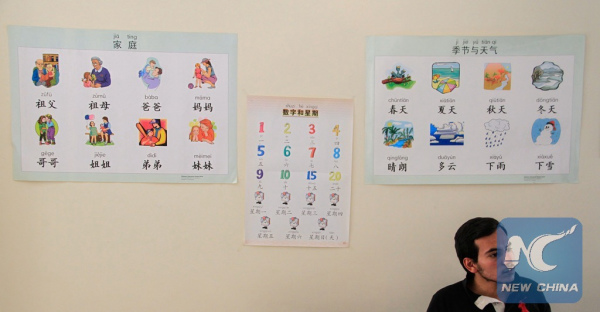
Confucius Institutes in Latin America provide not only Mandarin courses but also cultural events for locals, serving as an important bridge between the region and China, a Chilean education director told Xinhua during an interview.
More than 70,000 young Latin Americans are currently studying Mandarin at 45 Confucius Institutes in the region, and many other Latin Americans take part in Chinese cultural events organized by the institutes, said Roberto Lafontaine, director of the Santiago-based Regional Center of Confucius Institutes in Latin America.
Chile was the first country in the region to host a Confucius Institute eight years ago, Lafontaine said, adding that his center now has branches in Mexico, Costa Rica, Cuba, Panama, Colombia, Venezuela, Ecuador, Bolivia, Brazil, Argentina and Uruguay, as well as in the English-speaking Caribbean islands of Trinidad and Tobago, the Bahamas and Jamaica.
"More than a million people (in Latin America) participate in cultural activities organized by the Confucius Institutes," said Lafontaine.
Among these events in Chile was the presentation of a play about the life of famed Chinese admiral and explorer Zheng He in the 15th century, following presentations in Brazil and Argentina.

For Latin Americans, China used to be an exotic and mysterious land, yet "today there is a growing interest in its development", Lafontaine told Xinhua.
People want to know more about China's fashion trend, architecture, literature, film, among others, and the Confucius Institutes offer them an opportunity to know more about the Chinese culture, he said.
Different from many Confucius Institutes operating within universities, some institutes choose to reach out to local communities and streets, Lafontaine added.
"We want students in public or private primary or middle schools to have access to the Chinese language and culture, as well as the elderly, which allows us to expand knowledge about China to a much greater degree," he said.
Lafontaine said his regional center is opening Confucius Institutes in all Chilean cities, which is expected to reach 14 by the end of the year.


















































